Recent Articles
Popular Makes
Body Types
2020 Cadillac CT5 Road Test and Review
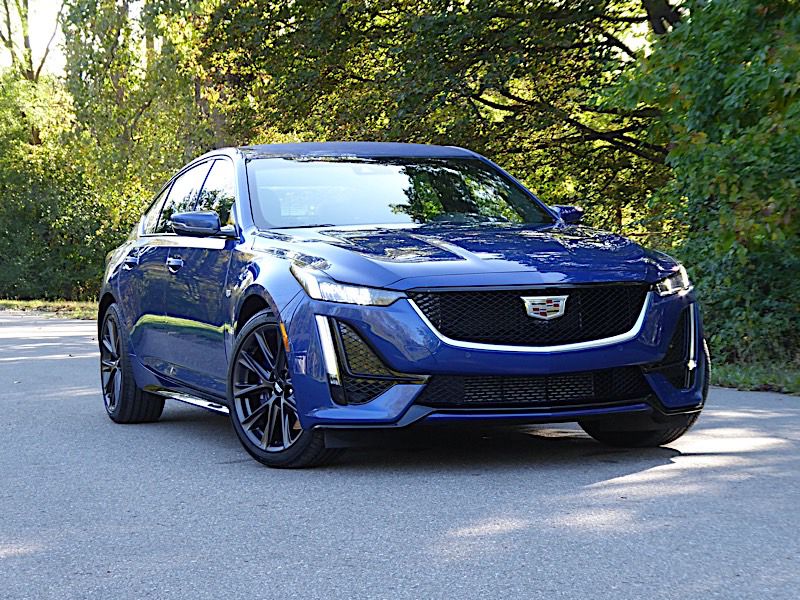
20cadillacfrontbeauty1sessions ・ Photo by Ron Sessions
Picking up where the 2019 Cadillac CTS left off is the 2020 Cadillac CT5. The premium mid-size CT5 remains on General Motors’ highly regarded Alpha platform. It shares much of its underpinnings with the outgoing CTS, which anchored Cadillac’s rear-wheel-drive sedan renaissance over the past 15 years. The CT5 features an extended wheelbase for increased rear legroom, but it also sports a lower, more-sloped, coupe-like fastback roofline. As for sheetmetal, the transition from CTS to CT5 is a subtle one, with more muscular body sides and a new, slightly smaller and less edgy shield grille and horizontal headlamps treatment showing similarities to the just-introduced Cadillac XT6 SUV.
Pricing starts at a surprisingly affordable $37,890 for the “base” Luxury trim — including the $995 destination charge — an astounding $10,000 less than the base trim in the outgoing 2019 CTS. Moving up the trim ladder brings the $41,690 Premium Luxury, $42,690 Sport, and range-topping $48,690 CT5-V. Available with all trims, including the V, is all-wheel drive; it's roughly $3,000 extra. Sizewise, the 2020 Cadillac CT5 competes with the BMW 5 Series, Audi A6, and Mercedes-Benz E-Class, but it's priced like the BMW 3 Series, Audi A4, and Mercedes-Benz C-Class territory.
All-Turbo Powertrain Lineup
A new turbocharged 2.0-liter four-cylinder — adapted from the transverse-mounted one in the Cadillac XT4 and XT5 SUVs — is the base engine in all models but the CT5-V. Its 237 horsepower and 258 lb-ft of torque are down considerably from the old CTS's base 2.0-liter, which featured 268 hp and 295 lb-ft. But the new engine makes its peak torque over a wide plateau from just 1,500 up to 4,000 rpm, providing good flexibility and eager low-rpm response. Four-cylinder CT5s get a 350T badge on the decklid, based on the engine's torque output in newton-meters. The EPA estimates this CT5 2.0-liter engine will achieve 26 mpg in mixed driving with rear-wheel drive and 25 mpg with AWD — both 1 mpg higher than the 2019 CTS 2.0-liter.
The CT5 Premium Luxury's optional 335-hp twin-turbo 3.0-liter V6 brings 400 lb-ft of torque, which livens up performance a bit and brings a 550T badge. The V-Series version of the CT5 upgrades to a higher-output 360-hp version of the 3.0-liter V6 turbo, but nothing’s been announced yet about a V8-powered CT5 V-Series to replace last year's CTS-V. All 2020 CT5 engines are paired with a quick-shifting 10-speed automatic transmission.
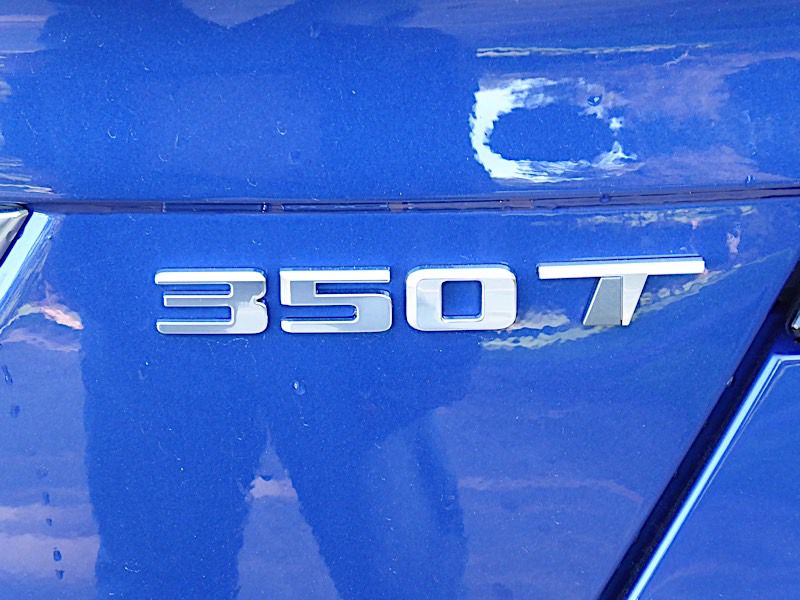
Photo by Ron Sessions
Classy Sanctuary
Even with the rather convincing and comfortable faux-leather seat coverings in the base CT5, the cabin is a classy sanctuary. Luxury and Premium Luxury trims receive rich-looking open-pore wood trim, while Sport models get carbon-fiber and aluminum interior accents. Optional leather hides cheer higher trims.
The interior is driver-focused but not to the detriment of its luxury mission. It’s not cutting-edge, but it's comfortable and durable-goods satisfying. A roomier center console adds space for small items and, on Sport and higher trims, a standard 15-watt wireless phone charger. Standard CT5 fare includes items such as dual-zone automatic climate control, push-button start, rain-sensing wipers, remote engine start, a manual tilt/telescopic leather-wrapped steering wheel, and a HomeLink garage-door opener. Active noise cancellation, which uses the vehicle’s audio speakers to counteract undesirable low-frequency booming at low engine speeds and during highway cruising, complements an already well-sealed interior and acoustic glass to create a calm, relaxing cabin environment. Optional equipment on select models includes messaging front seats, power backrest bolster adjustments, manual bottom-cushion extensions, heated and ventilated front seats, and a power-adjustable steering column.
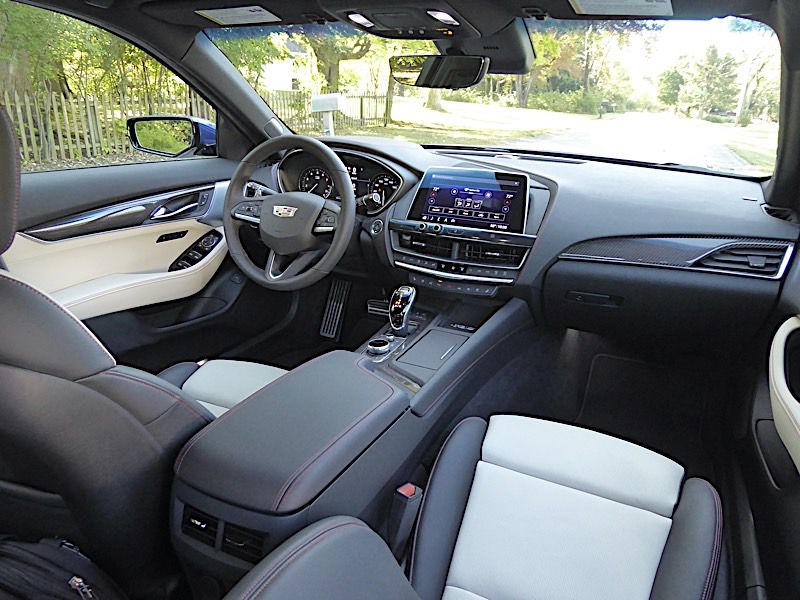
Photo by Ron Sessions
Welcome to the New CUE
The new third-gen Cadillac User Experience infotainment system brings an attractive, landscape-format 10-inch touchscreen display perched near the top of the dash, up from the 8-inch unit in the 2019 CTS. The big news is there are fewer eyes-off-the-road menus to scroll through, along with more hard buttons and knobs for many of the most frequently accessed climate control and audio functions, including volume and tuning. Aside from the bigger high-definition 1080dp color touchscreen, the new CUE can also be operated via steering wheel or voice controls as well as a new iDrive-like control wheel on the console.
Also standard are Apple CarPlay and Android Auto cellphone integration, Near Field Communication cellphone pairing, a nine-speaker AM/FM/HD radio, SiriusXM satellite radio, a Teen Driver app that lets parents keep tabs on the vehicle's speed and distance driven, Bluetooth, OnStar, a 4G LTE Wi-Fi hotspot, and three USB ports (two front and one in back). Extra-cost options include an imbedded navigation for those who don’t want to use their cellphone for maps, along with a robust-sounding, high-fidelity 15-speaker Bose premium audio system.
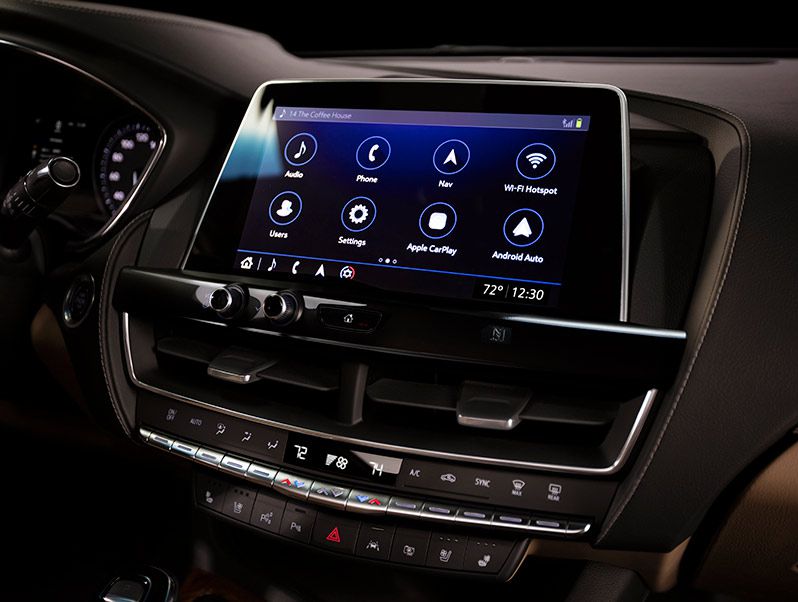
Photo by General Motors
Eyes on the Road
A head-up display is available as an option on Sport and higher trims. On the lower part of the windshield in front of the driver, information such as navigation directions can be viewed without taking eyes off the road to look down at the infotainment screen.
The head-up system can be configured to also display key vehicle information such as speed and cruise control settings, as well as audio system information such as current source, channel, and artist. A button on the lower dash lets you move the position of the display to accommodate different driver heights and seating positions.
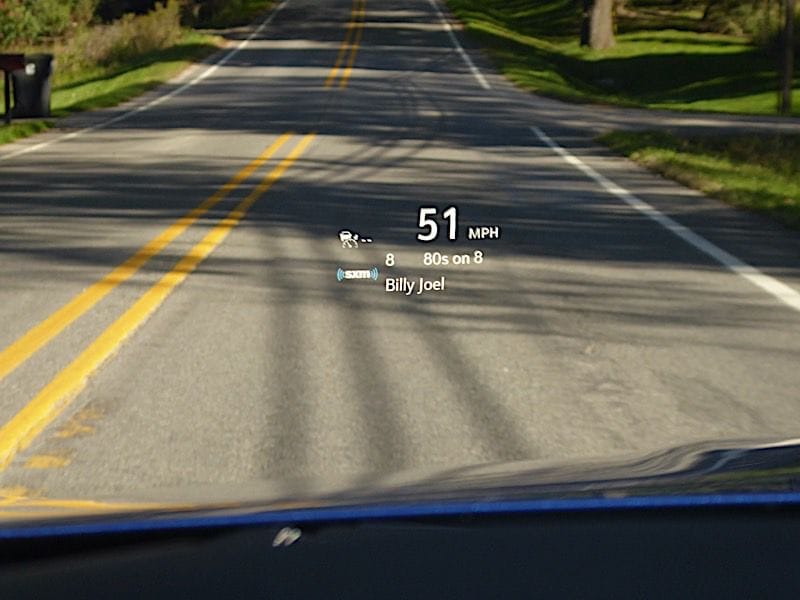
Photo by Ron Sessions
Choose Your Mode
While the overall demeanor of the new CT5 is sporty luxury, a console-mounted mode switch enables the driver to tailor the car’s driving characteristics such as steering effort, brake feel (courtesy of a new electronic power brake booster), transmission shift points, engine sound character (with “enhancements" delivered via the audio system speakers), and, on all-wheel-drive versions, front-to-back torque split for enhanced traction.
Selectable modes include a default Tour setting, fine for most everyday driving, as well Sport, Snow/Ice, and customizable My Mode selections. There is no Eco mode, but the engine does automatically shut off at idle to save fuel unless the driver turns the feature off with a button just to the right of the mode switch.
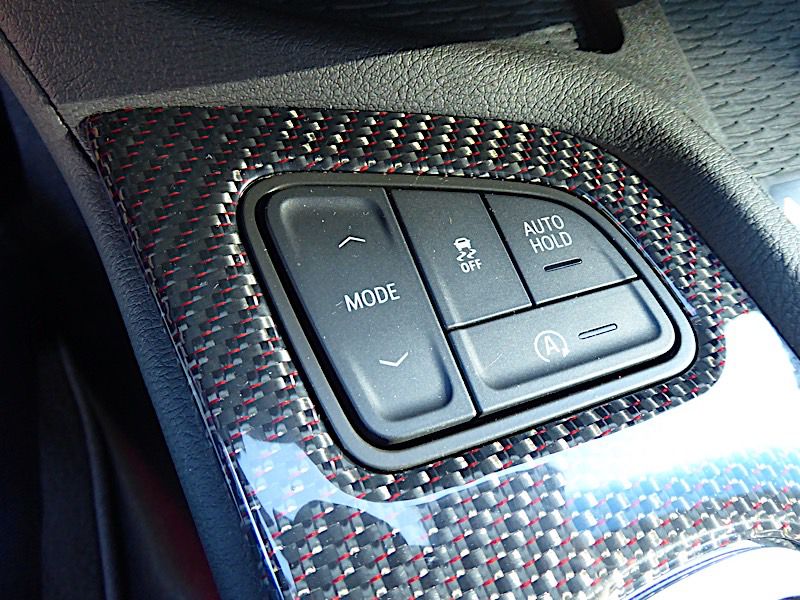
Photo by Ron Sessions
Roomier Back Seat
One of the key benefits of the 1.4-inch wheelbase stretch of the 2020 CT5 over the 2019 CTS is a more welcoming rear seat. Along with other changes, the CT5 has another 2.5 inches of rear legroom, giving long-legged backseat patrons a fighting chance to get comfortable back there. The CT5’s coupe-like sloping roofline does steal about an inch of rear-seat headroom, however, compared to the 2019 CTS.
The CT5’s shorter overall length, while delivering a sporty long-hood, short-deck profile that accentuates its rear-wheel-drive layout, crimps trunk space to a compact-sedan-like 11.9 cubic feet, nearly 2 cubic feet less than the outgoing 2019 CTS and considerably smaller than the trunks in some European competitors. A standard split fold-down rear seat, however, gives through-the-trunk access for toting longer items. An optional hands-free decklid release available on Sport and higher trims works with just a foot kick over the Cadillac crest logo projected under the rear bumper.
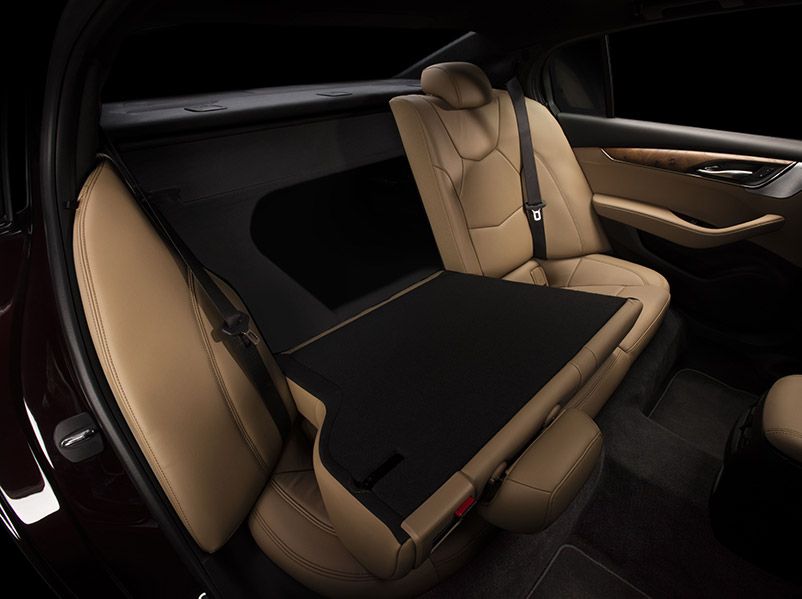
Photo by General Motors
CT5 Dynamics
Built on the Alpha platform that also underpins the Chevrolet Camaro, the Cadillac CT6, and the outgoing Cadillac CTS and ATS, the new CT5 exhibits the same exemplary driving characteristics. Balanced weight distribution, double-pivot strut front and multilink rear suspensions, stiff body structure, and precise, rack-mounted electric-boosted steering deliver satisfying levels of responsive handling and ride comfort, whether the CT5 is wearing 18-inch self-sealing or 19-inch run-flat tires. A new electronic brake booster makes brake response even more precise, bolstered in Sport and CT5-V models with larger front rotors and Brembo front calipers.
Cadillac’s Magnetic Ride Control system, which can adjust damping in milliseconds in response to changing road surfaces or driving parameters, is now restricted to the CT5-V model and is no longer available on lesser trims as it was in the 2019 CTS. Although Cadillac hasn’t yet given the CT5-V model the option of the ground-pounding 640-hp 6.2-liter V8 that was in last year’s CTS, the 2020 model does also benefit from a standard electronic limited-slip rear differential and advanced performance traction management that includes a Track Mode with Wet, Dry, Sport, Race 1, and Race 2 settings.
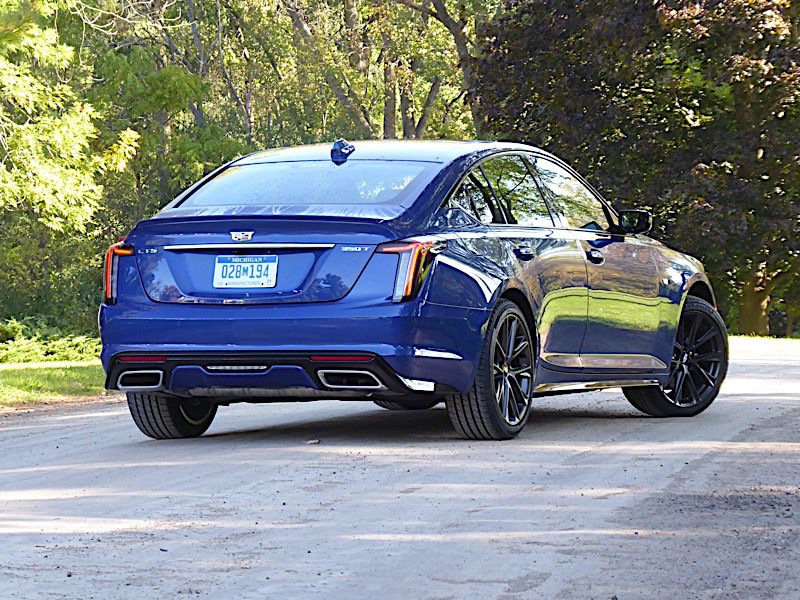
Photo by Ron Sessions
Electronic Driving Aids
Standard CT5 safety features include automatic emergency braking, a forward collision alert, front pedestrian braking, and a safety alert seat. The safety alert seat works with the forward collision warning, rear parking assist, blind-spot, and rear cross-traffic alert systems to buzz the bottom seat cushion in the direction of the hazard with a haptic pulse that complements existing audible and visual alerts.
Blind-spot monitoring comes on the Sport, Premium Luxury, and CT5-V models. Optional on Sport and higher trims are packages that includes a following-distance indicator, lane keep assist, a lane departure warning, a head-up display, and automatic high beams; and adaptive cruise control, high-speed automatic emergency braking, reverse automatic braking, and other safety and security aids. Also available is a Parking Package consisting of a 360-degree around-view monitor with an overhead view and five selectable camera angles, a rear camera mirror, a rear pedestrian alert, and automatic parking assist with braking.
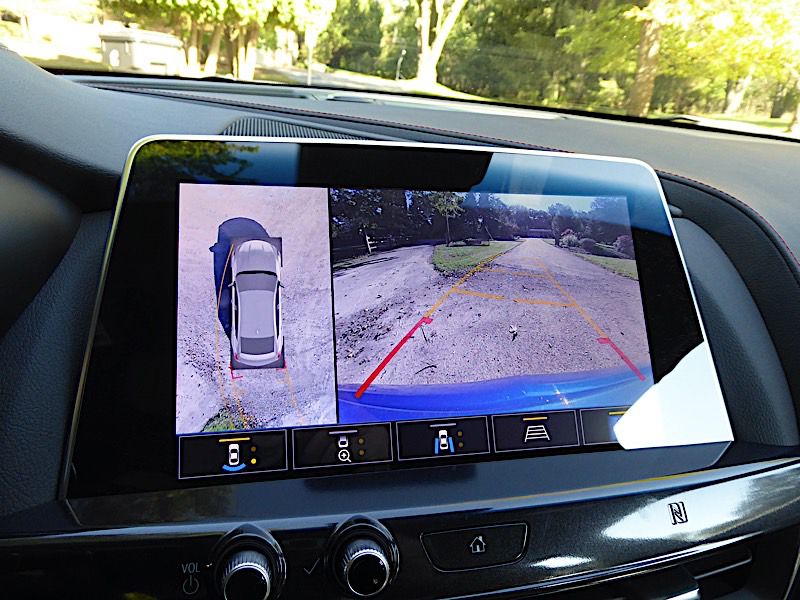
Photo by Ron Sessions
Waiting for Super Cruise
Buyers wanting to equip a 2020 CT5 with Cadillac’s sensational Super Cruise hands-free semi-autonomous drive system will have to wait until the second half of the 2020 model year as engineers work to integrate the system, first used in the 2017 CT6 full-size flagship sedan, across the brand’s model lineup.
Super Cruise uses high-precision GPS, LiDAR map data, and an array of radar sensors and cameras to enable the high-tech cruise control system. In the meantime, the good news is the portfolio of limited-access highways in the continental U.S. and Canada that will work with Super Cruise has expanded to more than 130,000 miles.
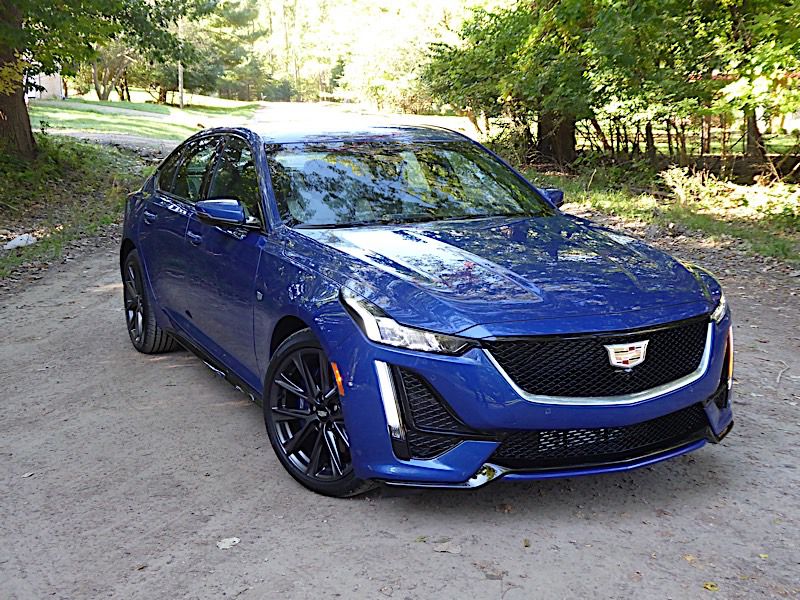
Photo by Ron Sessions